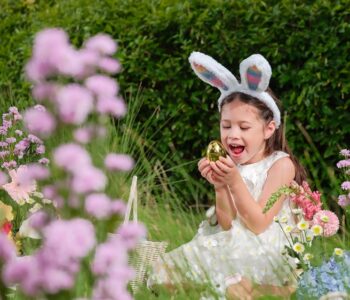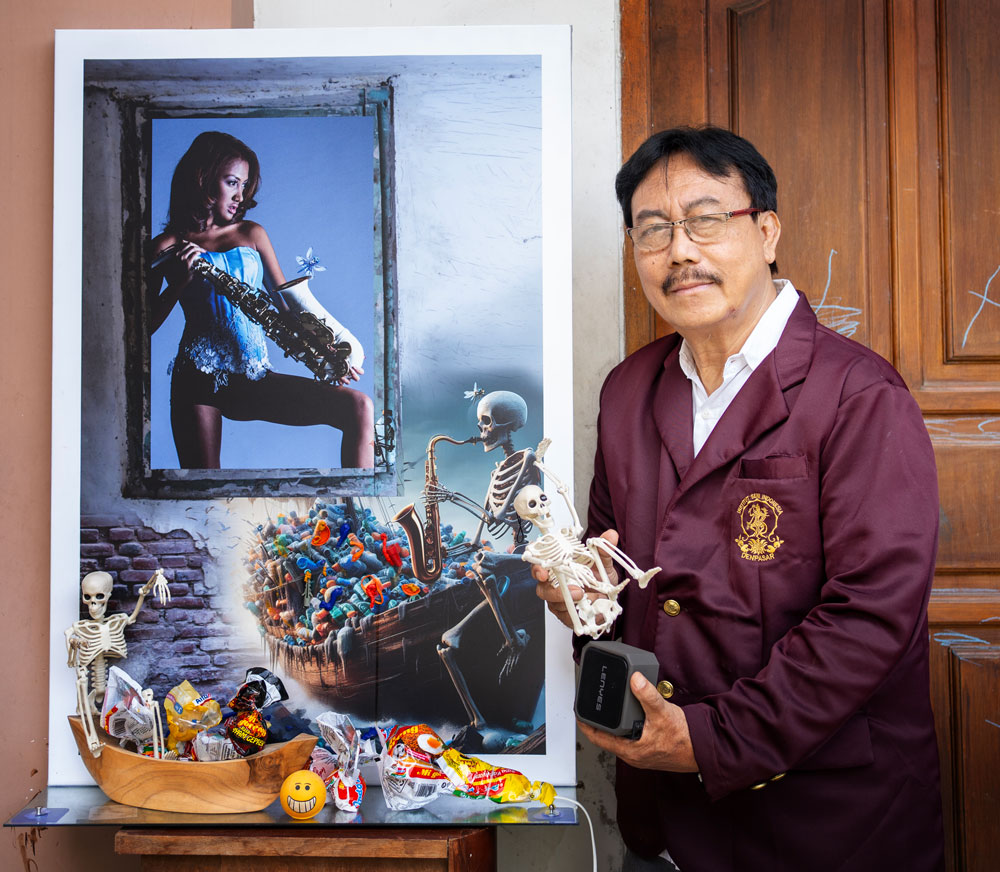
The artwork combines two-dimensional visuals with tri-media elements, including found objects and ready-made items. It also features mini speakers that play an ecological song composed by another artist.
Ida Bagus Putra Adnyana (Gustra), a 67-year-old senior photographer, remains eager to learn and recently achieved a Cumulative Achievement Score of 4 (Cum Laude) at the Indonesian Institute of Arts, Denpasar. His final project –supervised by Dr. I Made Bayu Pramana, S.Sn., M.Sn. and Dr. I Nyoman Suardina, S.Sn., M.Sn– is presented in the exhibition titled “Postphotography.”
The term “Postphotography” reflects an expansion beyond the traditional visual arts, intersecting various disciplines to create a brand new experience for the audience. Gustra sought to create a multi-sensory experience through his pieces; quite literally to engage multiple senses to deepen the viewer’s perception.
While visual elements (color, form, texture, and composition) remain central, the exhibition enhances the experience through several elements including: Sound, with music, narration, and traditional wayang (puppeteer) voices to reinforce thematic depth; Touch, with interactive textures, surfaces (rough/smooth), and installations using plastic waste; interactive elements like scanable barcodes that unlock additional layers of interaction. This exhibition invites audiences to experience photography in an innovative, boundary-crossing form.
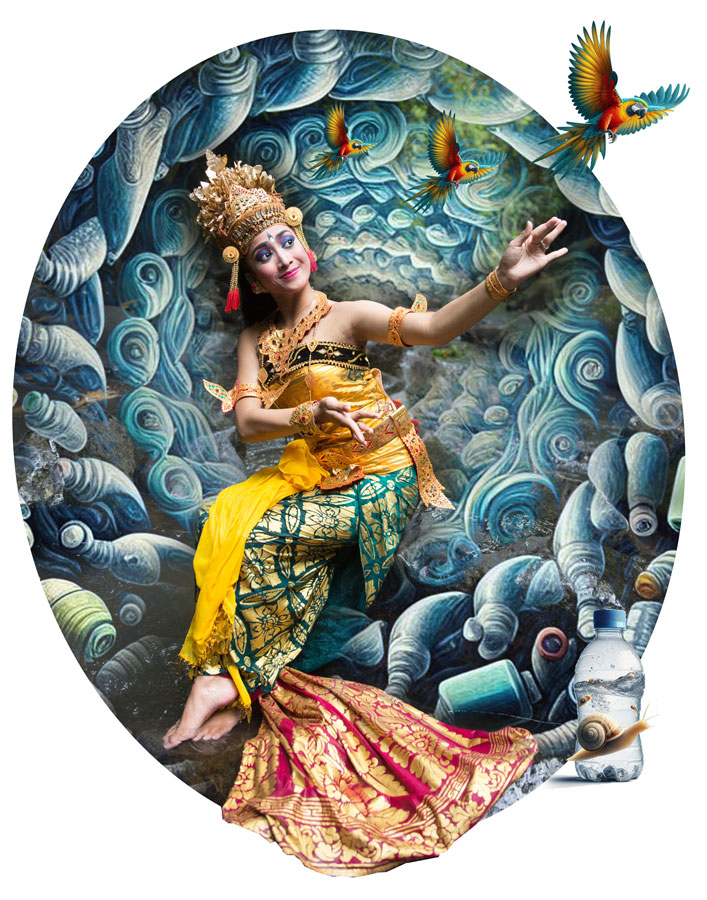
The use of certain scents in the work titled “Shinta” aims to create an atmosphere and connect visitors with the artwork’s theme. “I was inspired by the Lempad exhibition in Nusa Dua, which incorporated the smell of incense,” explains Gustra, who also published the photography book, Ancient Spirit of Bali. Multi-sensory visual art is designed to stimulate more of the visitor’s senses, creating a more immersive and memorable experience. This approach also enables the artist to convey messages and themes in a more complex and nuanced way, reaching the audience on different levels of emotion and perception.
This is why it is referred to as a collaborative work, supported by contributions from songwriters, puppeteers, and animators. “In cross-creative art, also known as thematic art, artists collaborate with one another to realize the desired concept. For example, they may work alongside puppeteers, song arrangers, and animators,” Gustra adds.
You may also like: Gustra Adnyana: Photography Through the Eyes of a Brahmin
In an exhibition of six final project works at Kopi Bali House Gallery, Sanur, the theory of postmodernism provides a framework to explore hyperreality—a concept where visual representations or simulations become more real than reality itself. This theory was proposed by Jean Baudrillard, a renowned French philosopher and sociologist. Baudrillard introduced the ideas of “simulacra” and “simulation,” explaining that in the postmodern world, signs and images begin to replace reality, creating a realm of hyperreality. Fairy tales such as Cinderella serve as representations or simulations of a fantasy world that does not exist in reality.
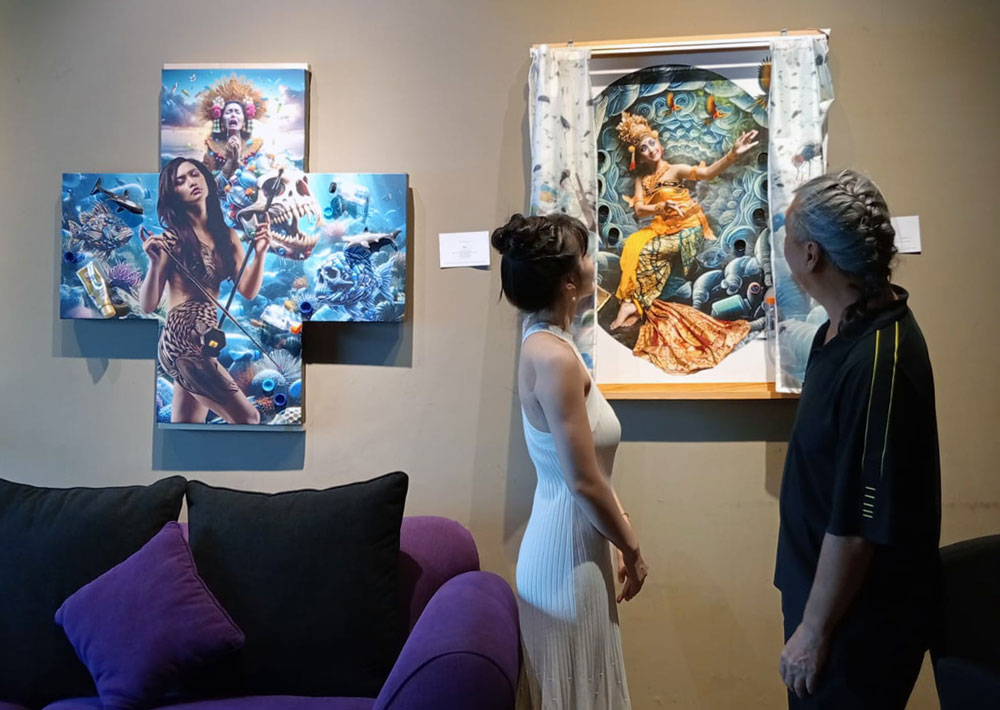
They are cultural constructs that depict an image of a perfect and magical world. Castles in fairy tales symbolize this fantasy realm. These castles are not merely buildings; they represent magic, luxury, and eternal happiness. Disneyland brings this fairy tale world to life in physical form. Cinderella’s castle, for instance, was constructed as part of the theme park. This serves as an example of the third stage of simulacra, where the representation becomes more real than the reality it imitates. For many people, the castle has become more recognizable and “real” than any actual castle in the world.
One of the works titled “Finally to the Sea” portrays a woman holding a saxophone by a window. On the wall, there is a mural of a skull sitting in a boat filled with plastic waste, also playing the saxophone. In front of the artwork, which is adorned with mirrored sheets, two toy skulls figures sit in a boat made from instant noodle wrappers. This transforms the two-dimensional image into a tangible, three-dimensional piece.
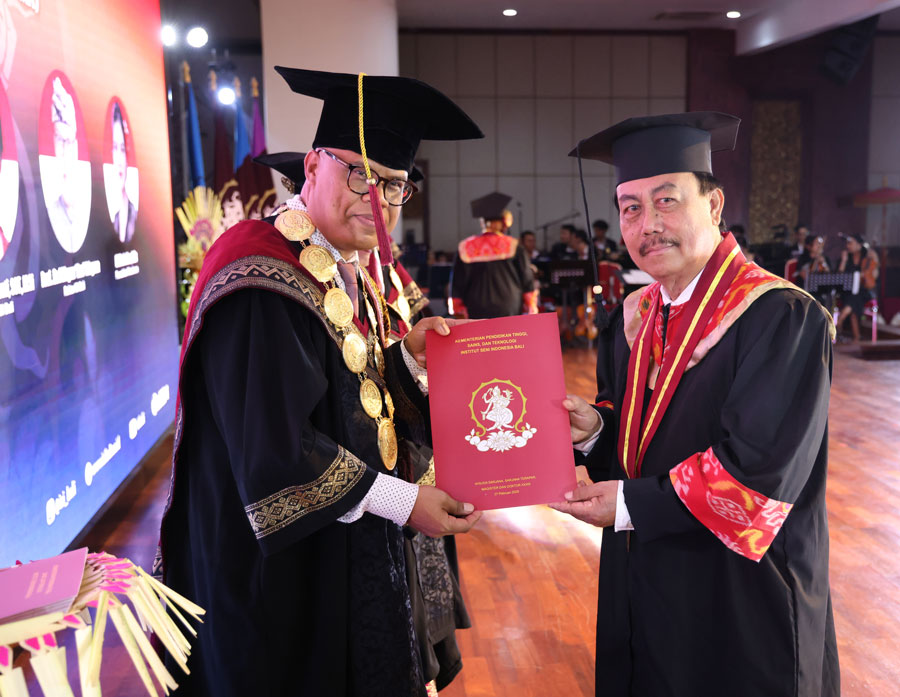
at the graduation ceremony on February 27, 2025
In addition to blending two-dimensional art with three-dimensional elements, such as found objects and ready-made items, the piece also incorporates sound. A small speaker plays a song about ecology, emphasizing the dangers of plastic waste when it ends up in the ocean. Visitors can also view an animation by scanning the barcode placed near the artwork.
Gustra, a senior artist, continues to acquire knowledge to delay the onset of senile dementia. By doing so, Gustra not only inspires children, grandchildren, and the younger generation to keep learning, but also nurtures a sharp mind. Through consistent reading and writing, knowledge flourishes, and, as often happens, abundant knowledge can also lead to a flow of fortune.





